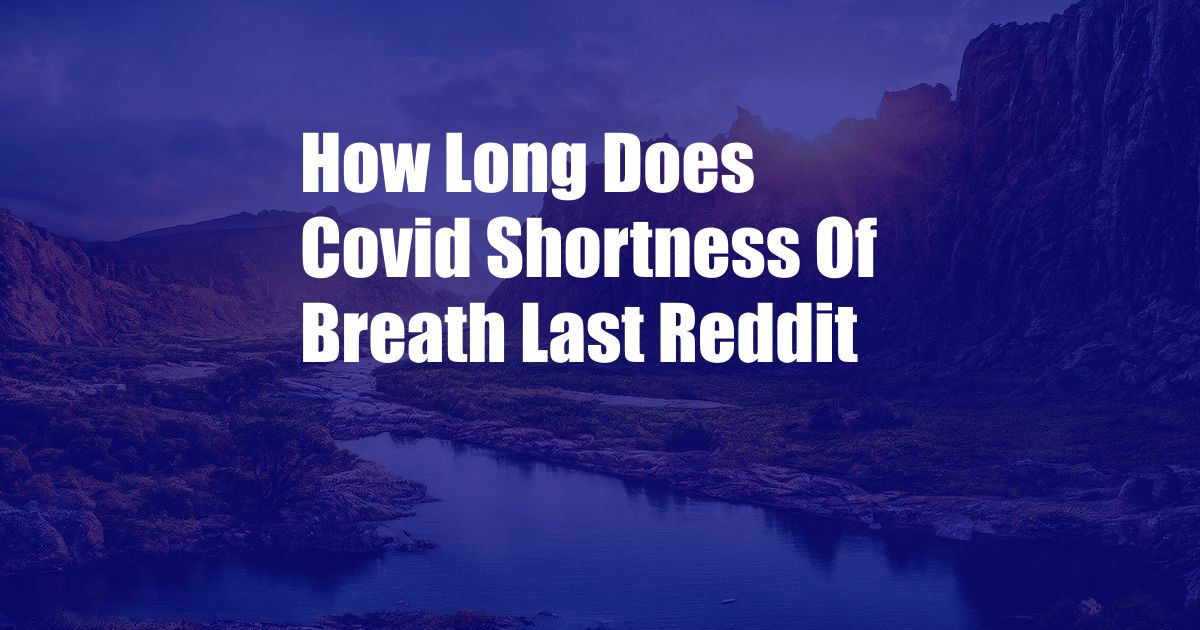
How Long Does COVID-19 Shortness of Breath Last? And What to Do About It
Every breath I took felt like an enormous effort, a constant reminder of the virus that had taken hold of my lungs. My chest felt heavy and tight, as if an invisible weight was crushing down on me.
Understanding COVID-19 Shortness of Breath (SOB)
SOB, also known as dyspnea, is a common symptom of COVID-19, affecting up to 50% of patients. It can range in severity from mild to severe, making everyday activities like walking or climbing stairs a daunting task. SOB is caused by inflammation and damage to the lungs, which can impair gas exchange and lead to a lack of oxygen in the bloodstream.
Timeline of COVID-19 SOB
The duration of SOB can vary significantly from person to person. In most cases, SOB appears within the first week of infection and gradually subsides over the next few weeks. However, some individuals may experience persistent SOB for months or even years after the initial infection.
Factors Influencing SOB Duration
- Viral Load: A higher viral load can lead to more severe SOB.
- Lung Function: Individuals with underlying lung conditions, such as asthma or COPD, are more likely to experience prolonged SOB.
- Overall Health: Age, obesity, and other comorbidities can worsen SOB severity and duration.
Managing COVID-19 SOB
- Rest: Avoid strenuous activities and prioritize rest to allow your lungs to heal.
- Oxygen Therapy: Oxygen can help alleviate SOB by increasing the amount of oxygen in the bloodstream.
- Pulmonary Rehabilitation: Physical exercises supervised by a healthcare professional can strengthen the lungs and improve breathing capacity.
- Medications: Inhaled bronchodilators and corticosteroids can reduce inflammation and improve airflow.
Expert Advice and Tips
- Create a Relaxed Environment: Minimize stress and anxiety, which can trigger SOB. Use relaxation techniques like meditation or deep breathing exercises.
- Hydrate Well: Staying hydrated can help thin mucus and ease breathing.
- Avoid Smoking and Secondhand Smoke: These irritants can further damage the lungs.
- Monitor Oxygen Levels: Use a pulse oximeter to monitor your blood oxygen levels. Seek medical attention if levels drop below 90%.
FAQ on COVID-19 SOB
-
Q: Is SOB always a sign of severe COVID-19?
-
A: No, SOB can be mild and resolve on its own. However, it’s important to seek medical attention if SOB persists or worsens.
-
Q: How long does it take to recover from COVID-19 SOB?
-
A: Recovery time varies, but most people experience gradual improvement within a few weeks. Some may require ongoing treatment or therapy for prolonged SOB.
Conclusion
COVID-19 SOB can be a debilitating symptom, affecting both physical and emotional well-being. Understanding the duration and management strategies can help individuals cope with this challenging symptom. If you experience SOB related to COVID-19, don’t hesitate to seek professional medical advice.
Call to Action
Have you experienced COVID-19 SOB? Share your story and tips in the comments below. Together, we can support each other through this shared experience and improve our understanding of this evolving condition.